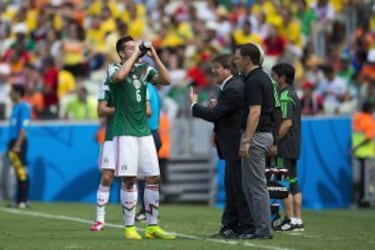Cooling break in Qatar 2022 World Cup: Why do they stop in the middle of the game? For how long?
Under what circumstances can the referee stop play due to the heat and when was the first one introduced?

Cooling breaks in football have become something we are now used to seeing in most leagues, with even typically colder countries such as England suffering from higher temperatures over recent seasons. The referee now has the power to stop the match specifically so the players can drink water - but what is the story behind them?
When was the first FIFA cooling break?
Cooling breaks were first introduced in the 2014 World Cup, which was held in Brazil. The first game which used the break was Netherlands vs Mexico, in which Portuguese referee Pedro Polenca called a breather after temperatures of 39 degrees celsius were recorded at the Estadio Castelao in Fortaleza. This break lasted for around five minutes, although things have been sped up over more recent seasons.

What is the minumum temperature to allow for a cooling break?
Official rules state that when the temperature is at least 32ºc (89ºF) during a match, the referee applies the ‘cooling break’: a match interruption intended for the hydration of the players. The usual thing is for these breaks to come around the 25th and 70th minutes, although the times can vary.
An official FIFA statement in 2014 on the matter said “cooling breaks last three minutes in duration are then implemented by the referee at approximately 30 minutes into the run-of-play in both halves of the match (i.e. around the 30th minute and 75th minute respectively). Three minutes will then be added to stoppage time at the end of each half.”
Related stories
During Euro 2020, the breaks lasted around 90 seconds. As well as the cooling breaks for the players, the stadiums in Qatar will all have air conditioning to battle the high temperatures.
Will we see cooling breaks in Qatar?
Put simply, yes. Estimates say that temperatures during November and December have a typical high of 29ºC (84ºF) but given the rise in global temperatures this year, expect to see the referee stop the match so the players can catch their breath.
- Qatar World Cup Schedule
- USMNT win World Cup... race to Qatar
- World Cup Simulator
- Messi set to make World Cup history

